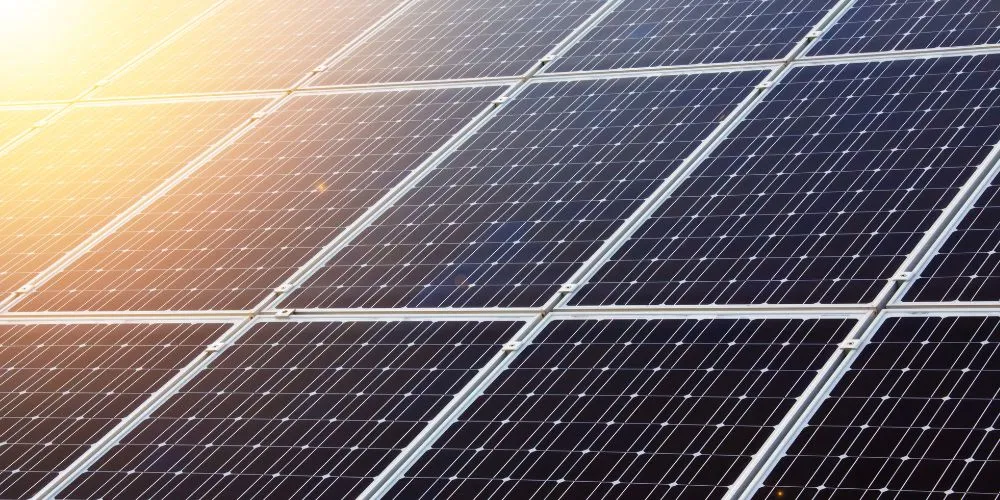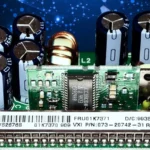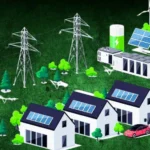Photovoltaic (PV) cells, commonly known as solar cells, convert sunlight directly into electricity. This technology has achieved significant attention due to its potential to provide clean, renewable energy. This comprehensive article delves into the principles, types, benefits, challenges, and future trends of photovoltaic cells, highlighting their role in advancing sustainable energy solutions.
Understanding Photovoltaic Cells
Photovoltaic cells are the building blocks of solar panels, and they play a crucial role in converting sunlight into usable electrical energy.
What are Photovoltaic Cells?
Photovoltaic cells are semiconductors that convert light energy into electrical energy through the photovoltaic effect. When photons from sunlight hit the cell, they knock electrons loose from their atoms, making an electric current. This process is fundamental to how solar panels generate electricity.
The Photovoltaic Effect
The photovoltaic effect is the underlying principle behind PV cells. When light photons strike the surface of a photovoltaic cell, they transfer their energy to electrons in the semiconductor material, typically silicon. This energy boost helps the electrons to flow as an electric current, which can be harnessed for power.
Historical Development
The photovoltaic effect was first discovered by French physicist Edmond Becquerel in 1839. However, it wasn’t until the 1950s that Bell Labs developed the first practical photovoltaic cell. Since then, advancements in materials science and manufacturing techniques have significantly improved the efficiency and affordability of PV cells.
Types of Photovoltaic Cells
There are several types of photovoltaic cells, each with unique characteristics and applications.
Monocrystalline Silicon Cells
Monocrystalline silicon cells are made from a single continuous crystal structure. They are known for their high efficiency and long lifespan. Although they are typically more expensive to produce, they offer better energy conversion performance.
Polycrystalline Silicon Cells
Polycrystalline silicon cells are composed of multiple crystal fragments. They are less expensive to produce than monocrystalline cells but generally have lower efficiency. Due to their cost-effectiveness, polycrystalline cells are widely used in residential and commercial solar installations.
Thin-Film Photovoltaic Cells
Thin-film photovoltaic cells deposit one or more layers of photovoltaic material onto a substrate. They are flexible, lightweight, and can be produced at a lower cost. Although they typically have lower efficiency than silicon-based cells, thin-film technologies are ideal for applications where weight and flexibility are critical.
Benefits of Photovoltaic Cells
Photovoltaic cells offer numerous advantages contributing to their growing adoption in various sectors.
Renewable Energy Source
Photovoltaic cells harness the sun’s energy, an abundant and inexhaustible resource. Unlike fossil fuels, solar power does not deplete natural resources, making it a sustainable energy solution for the future.
Environmental Benefits
One of the most significant benefits of PV cells is their minimal environmental impact. Solar power generation does not produce greenhouse gas emissions or air pollutants, helping to reduce the carbon footprint and mitigate climate change.
Energy Independence
By generating electricity from sunlight, photovoltaic systems can reduce dependence on fossil fuels and improve energy security. It is particularly important for remote or off-grid locations where traditional energy sources are unavailable.
Challenges of Photovoltaic Cells
Despite their benefits, photovoltaic cells face several challenges that must be addressed to maximize their potential.
Efficiency Limitations
The efficiency of photovoltaic cells in transforming sunlight into electricity is a critical factor. While advancements have been made, most commercial PV cells have 15% to 22% efficiencies. Improving efficiency remains a key area of research needed to make solar power more viable.
Energy Storage
Solar power generation is intermittent, as it depends on sunlight availability. Effective energy storage solutions like batteries ensure a consistent power supply. Developing and integrating efficient, cost-effective storage technologies are critical for the widespread adoption of solar energy.
Initial Costs
The initial investment required for photovoltaic systems can be high, including solar panels, installation, and related infrastructure costs. Although prices have been declining, making solar power more accessible, the upfront costs can still be a barrier for some users.
Future Trends in Photovoltaic Cells
Ongoing advancements and innovative approaches shape the future of photovoltaic cells to enhance their performance and affordability.
Advanced Materials
Research into new materials, such as perovskites and organic photovoltaics, holds promise for improving efficiency and reducing the cost of PV cells. These materials offer unique properties that could revolutionize solar technology and make it more competitive with traditional energy sources.
Integration with Smart Grids
The integration of photovoltaic systems with smart grids is a significant trend. Smart grids use advanced transmission and control technologies to optimize the distribution and use of electricity. Smart grids can enhance grid stability, efficiency, and resilience by incorporating solar power.
Building-Integrated Photovoltaics (BIPV)
Building-Integrated Photovoltaics (BIPV) involves integrating PV cells directly into construction materials, such as windows, roofs, and facades. This approach generates electricity and enhances the aesthetic and functional aspects of buildings. BIPV is expected to play a crucial role in the future of sustainable architecture and urban planning.
Conclusion
Photovoltaic cells are a cornerstone of modern renewable energy solutions, offering a sustainable and environmentally friendly way to generate electricity. By understanding PV cells’ principles, types, benefits, and challenges, we can appreciate their significant role in advancing clean energy technologies. Despite challenges related to efficiency, energy storage, and initial costs, ongoing research, and technological advancements promise to enhance the performance and affordability of photovoltaic cells. As we move towards a more sustainable future, photovoltaic cells will undoubtedly play a pivotal role in meeting global energy needs and mitigating the impacts of climate change.












